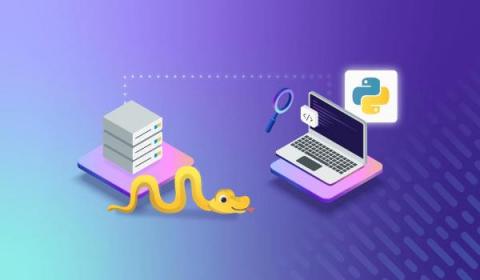Operations | Monitoring | ITSM | DevOps | Cloud
Lightrun
How to Perform Python Remote Debugging
Debugging is the process of identifying, analyzing and removing errors in the software. It is a process that can start at any stage of the software development, even as early as the software has been written. Sometimes, remote debugging is necessary. In the simplest terms, remote debugging is debugging an application running in a remote environment like production and staging.
Node.js Security and Observability using Lightrun & Snyk
As developers, we spend a lot of time in our IDEs writing new code, refactoring code, adding tests, fixing bugs and more. And in recent years, IDEs have become powerful tools, helping us developers with anything from interacting with HTTP requests to generally boosting our productivity. So you have to ask — what if we could also prevent security issues in our code before we ship it?
The Essential Guide to Kubernetes Service Discovery
A fundamental element of the Kubernetes microservices system is the services model, which gives teams greater understanding of how their applications are deployed. These objects running within pods and containers, by extension, are RESTful since they’re based on APIs. However, DevOps teams can’t hope to run a tight ship without managing their services. Communication and visibility are absolutely crucial in a Kubernetes system.
Full-cycle observability with the Elastic Stack and Lightrun
An application running in production is a difficult beast to tame. Most experienced developers–ones who spent enough late nights or Saturday mornings trying to break apart a nasty production bug–will try and create the clearest possible picture for their later selves while writing their code, so that they could understand what’s actually going on in the system during an incident.
How to Debug Remotely in VS Code
You’re likely familiar with local debugging—the ability to go through your code line by line to find and eliminate bugs. However, with the ever-increasing complexity of development environments, working efficiently with remote systems is becoming more necessary. In this case, “remote” can mean any machine you don’t have native OS-level access to, such as Virtual Machines, Docker containers, and entirely separate devices accessed over the network.
Lightrun Launches Support for Python, Giving Developers a Simpler Way to Debug Live Machine Learning Pipelines
Lightrun for Python is Now Generally Available
After building Lightrun for the JVM – an easier way to get a better grasp on production applications written in Java, Scala, and Kotlin – we’re pleased to announce the release of Lightrun’s developer-native observability platform for Python!
5 Most Common API Errors and How to Fix Them
As software got more complex, more and more software projects rely on API integrations to run. Some of the most common API use cases involve pulling in external data that’s crucial to the function of your application. This includes weather data, financial data, or even syncing with another service your customer wants to share data with. However, the risk with API development lies in the interaction with code you didn’t write—and usually cannot see—that needs debugging.
The Quick and Easy Guide to Reformatting Code in IntelliJ
As a developer, you’re going to be making changes to a codebase. That’s why, as Harold Abelson put it, “Programs must be written for people to read.” If a codebase is not clearly formatted, debugging becomes more difficult than it should be. Though usually overlooked, little changes like reformatting and proper indentation of your code can obviously differentiate a professional developer’s code base from someone just learning.











